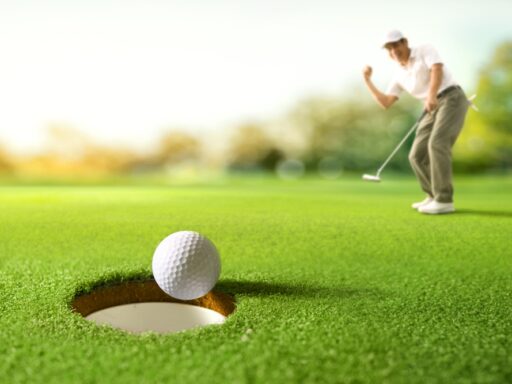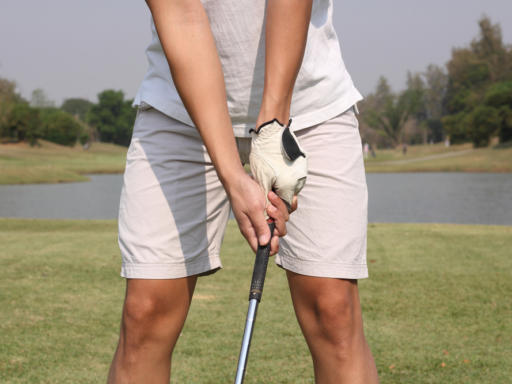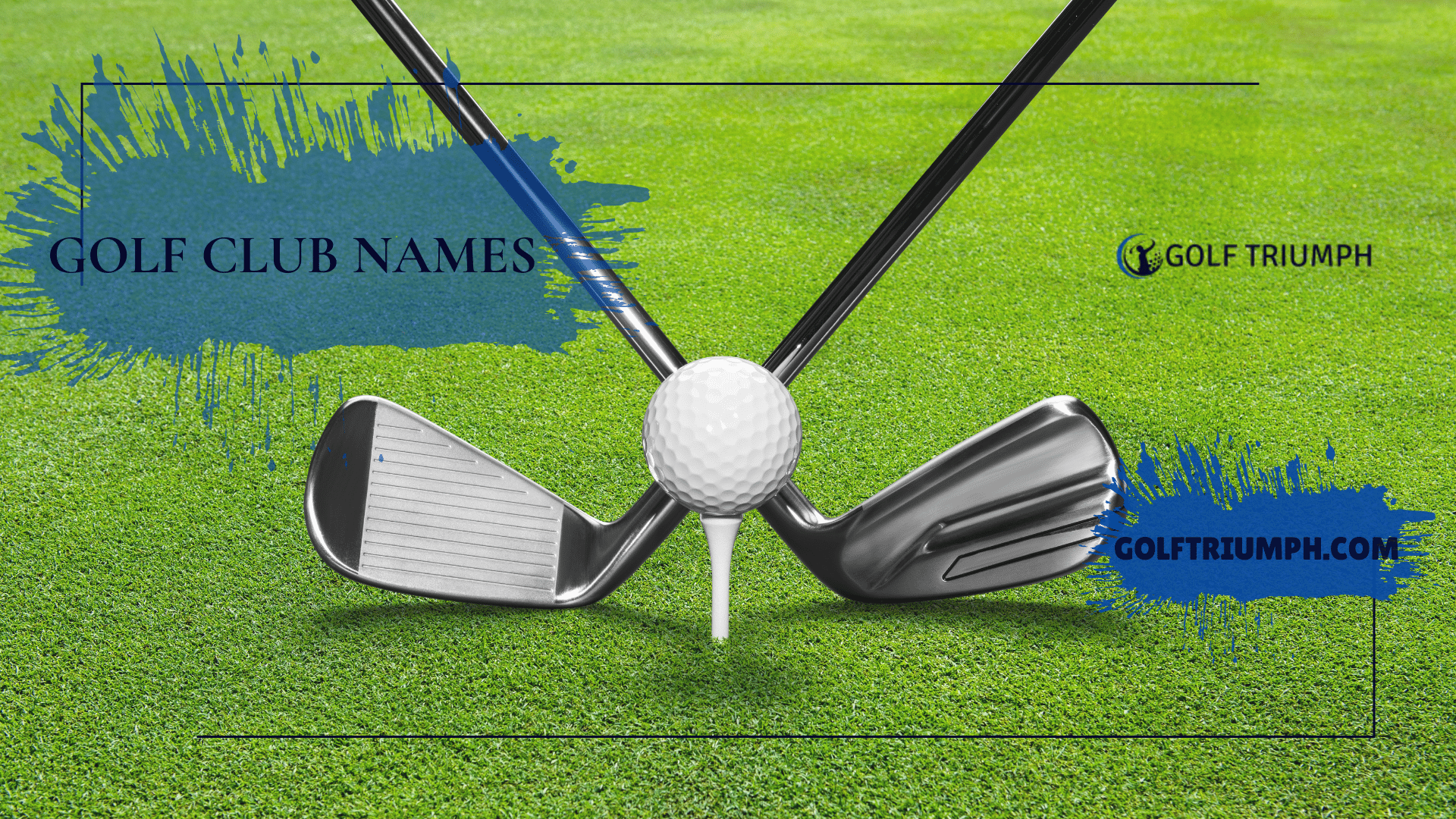
Are you a fan of golfing? However, are you familiar with the names of good golf clubs? Well, we’d say first, you must clearly understand golf club names to understand golf well. Looking at the golf scorecard always excites a professional golf player. Therefore, once you have a clear idea of these terms and clubs, you can play your game more effectively. Now you must be thinking about where to get all this information. We are here to delve into the concept of golf clubs and what types are used for what specific purposes. Moreover, you will clearly understand what golf is. So, let’s not waste any more time and dive straight in. From hickory shafts to antique golf, you will find everything here. Let us first take a look at the origin of these clubs and their names.
The Origin of Golf Clubs
Over time, golf club names have changed significantly to reflect advancements in design, technology, and playing techniques. Clubs were initially given names depending on their intended function. Moreover, physical attributes, which produced an incredible variety of historical names. These include wacky names like spoons and mashie niblicks, now more widely recognized as fairway woods and irons. Each moniker attests to golf’s vast history. As different clubs are made for other shots, such as teeing off on longer courses or approaching the green. Today’s golf clubs are woods, irons, hybrids, wedges, and putters. Each style is there to address particular playing situations. Irons are sued for immediate distances, whereas, woods are used for long-distance shots, usually from the tee or fairway.
Hybrids offer versatility and ease of usage by fusing iron and wood components. Wedges, including specialty varieties like the lob and throwing wedges, are perfect for short, high-precision shots around the green. Last, the golf club names putter’s primary use is on the green, which is essential for making the last few strokes necessary to sink the ball. This organized method of labeling and classifying golf clubs makes it easier for players to put together a bag. That is for any situation that may arise during a round of golf. Before heading towards the names, let’s understand more historical aspects of golf.
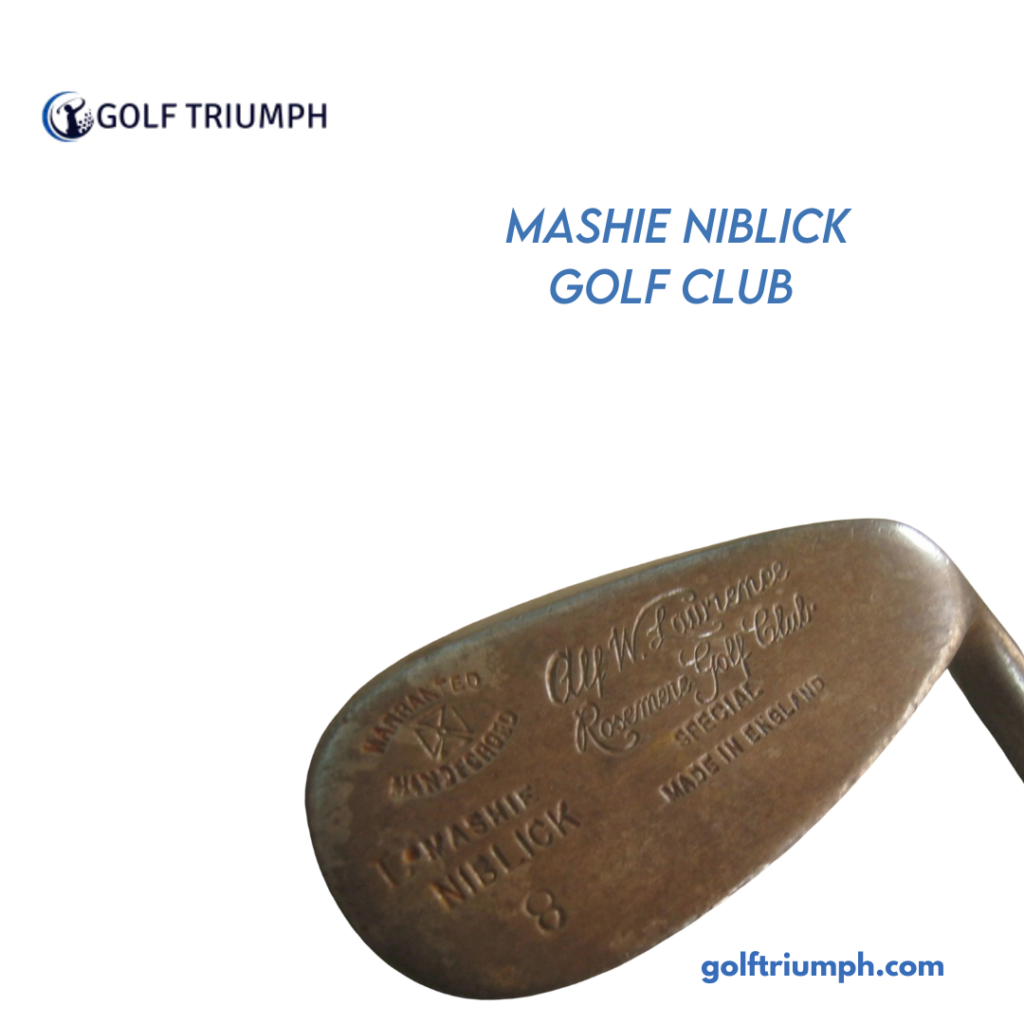
Mashie to Niblicks: A History of Golf Clubs Name
Do you know golf has a history of its own, too? Let’s read about it here. The history of golf clubs in the 19th century reveals an intriguing development in the gear used in the sport. Therefore marked by various unusual and colorful terms like mashies, niblicks, spoons, and cleeks. Their names are amusing and have distinct purposes on the golf course: mashies are used like mid-irons, while niblicks were employed for short, high shots akin to modern wedges. Cleeks resembled current drivers or 1-irons, used for long driving shots, while spoons were the ancestors of today’s fairway woods, meant for long-distance strokes. These club names became increasingly standardized as golf gained popularity in the US and the UK, which helped to create the conditions for more standardized, mass-produced equipment around the turn of the 20th century.
- The numbered system that was recognizable to modern golfers by the early 1900s superseded the quirky, distinctive names of golf clubs, which reflected both technological developments and a change in manufacturing procedures from hand-forged to factory-made clubs.
- With the advent of steel and then graphite shafts, this transformation signaled a significant technological advancement and a shift in how society saw the sport.
- Historians and collectors treasure these vintage golf club names, now frequently referred to as antique or historic clubs, and offer a glimpse into the sport’s untamed beginnings and centuries-long development.
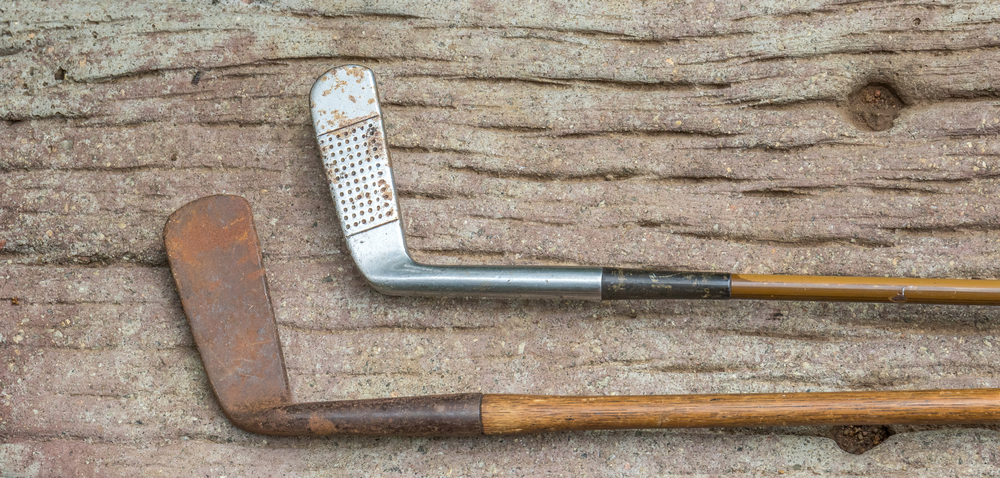
Type of Club Names
Here’s a look at the types of club names, specifically designed for golfing.
Woods
The wood class of golf stick is necessary to hit the ball as far as possible on the course. These clubs are usually are of wood, but as technology develops, they are now with metal or composite materials for better durability and performance.
- Large clubheads and the most extended shafts among all golf clubs are wood characteristics, allowing players to achieve fast swing speeds.
- The primary wood, sometimes known as the driver or 1-wood, is designed to be used from the teeing ground and is geared for distance on long holes.
- With its most extended shaft and most enormous head, it makes lengthy drives possible.
The 3-wood and 5-wood are two examples of fairway woods utilized for long shots from the rough or fairway. - When a golfer is too far from the green for iron, these clubs, larger than irons but with shafts that are marginally shorter than a driver’s, can help them cover long distances.
Irons
Golf irons are a primary category of club identified by their angled faces and groove-etched patterns that help with grip and ball spin. These clubs come in various sizes, from 3-irons to pitching wedges.
- Higher-numbered irons have shorter shafts and more loft to improve control and accuracy.
- In contrast to woods, irons feature smaller, frequently solid heads, which are blades because of their thin profiles; some recent iterations include hollow heads for better performance and weight distribution.
- Irons help hit shorter tee or fairway shots since they can negotiate different course configurations and reach desired distances.
- With irons designed for certain shot-making situations, players can handle various on-course situations, from long approaches to difficult chip shots near the greens.
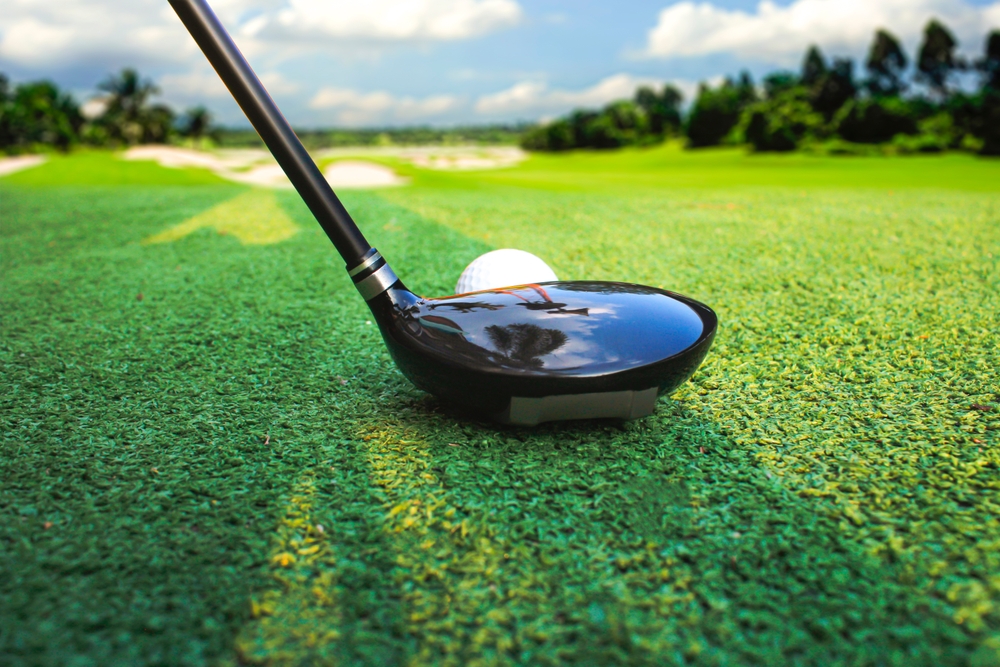
Hybrids
Hybrid golf clubs, sometimes called rescue clubs or utility clubs, are a relatively new type of equipment that combines the finest aspects of irons and woods, including both.
- Golfers will find it easier to use and perform better with these clubs because they are explicitly known like irons (e.g., 2-hybrid, 3-hybrid) to indicate the iron they are to replace.
- Hybrids are very helpful in substituting long irons, including the 2-, 3-, 4-, or 5-irons.
- They give golfers a simpler, forgiving alternative, especially when making difficult shots from rough or tricky lies.
- These clubs are designed to combine the precision and control of irons with the forgiving, powerful qualities of wood, and that’s why the term hybrid perfectly describes them.
- Because of their unique composition, hybrids are a must-have for any golfer trying to improve since they provide increased confidence and consistency in their long game.
Wedges
Specialized golf club names are for accuracy in short-game situations are wedges.
- Pitching wedges (PW), sand wedges (SW), gap wedges (GW), lob wedges (LW), and occasionally the ultra-lob wedge (ULW) are usually there in the set.
- Each wedge is seen by its loft angle.
- The pitching wedge manages medium-range shots and approaches with a loft of roughly 44 to 48 degrees.
- The 54–58-degree sand wedge is in bunker play; it has a broader, heavier sole that facilitates sand escapes.
- To help with accurate distance control, the gap wedge is at an angle of between 50 and 54 degrees between the PW and SW.
- With a loft ranging from 58 to 64 degrees, the lob wedge performs best on short, high shots over impediments.
- Extending to 64 degrees, the super lob wedge is best for exceptionally steep shots; however, it is less frequently in ordinary play.
Putters
Putters have a special place in the golf club names world since they are the preferred club for the delicate task of rolling the golf ball into the hole on a green.
- These have a small loft, usually at most five degrees, unlike what the general public believes.
- The ball will roll more smoothly and not bounce off the green, which could deflect it from its intended route.
- Thanks to this slight elevation, we gently lift the ball over any minor flaws on the green.
- Many different golf putter designs, sizes, and shapes are available on the market, all of which are there to accommodate various cutting techniques and golfer preferences.
- A handful of the popular styles, each intends to improve alignment, stability, and weight distribution, are said by names like Blade, Mallet, and Peripherally-Weighted.
- The feel of the putter in one’s hands, comfort level, and the confidence it gives for those vital finishing strokes are generally the deciding factors when selecting a putter.
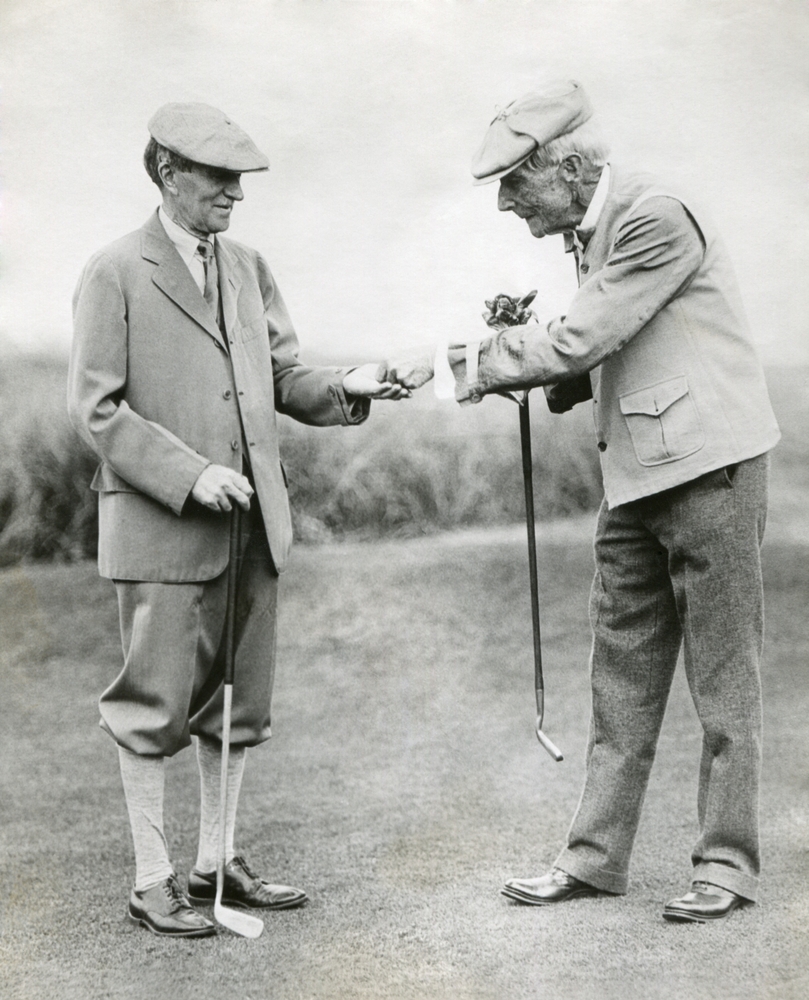
Old Golf Club Names
The function, materials, and design of golf club names are commonly seen in their names in the past; many of these titles are charming and descriptive, but in the modern game of golf, more superficial numerical designations have taken their place. A time when clubs were hand-crafted and less standardized have given rise to name a golf club like Brassie, Baffie, Cleek, and Mashie Niblick, each with a distinct personality strongly associated with how it was used on the course. These old golf names eventually led to the current numerical system as the sport developed and production became more standardized in the early 20th century. This simplified the sport but also took away some of the historical allure and distinctiveness of the clubs’ identities.
Development of Antique Golf Clubs: A Revolution
Utilizing innovative materials and intricate designs to improve performance at all skill levels defines modern clubs.
Components and Style
The styles and components in golfing have actually changed over the course of time.
- Drivers and Woods: Use lightweight materials such as graphite and titanium, which allow for larger clubheads, enhancing forgiveness and sweet spots.
- Hybrids: Designed to replace long, difficult-to-hit irons, hybrids combine the advantages of woods and irons with versatile qualities.
- Irons: They can be anything from player-specific irons providing more control and feedback to game-improvement models emphasizing forgiveness.
- Wedges: Use specific clubs designed for accuracy, such as sand and lob wedges for the short game.
- Putters: Equipped with alignment aids to improve accuracy, they come in various shapes, such as blade and mallet. Master your golf shots and hit with those clubs with accuracy.
Innovations in Technology
With time, golf clubs keep changing their styles with respect to the great advancement in technology.
- Loft, lie, and weight distribution adjustments are standard in modern equivalent clubs, enabling customized fit and performance optimization.
- High-speed cameras and launch monitors are fitting technologies that help tailor clubs to specific swing characteristics.
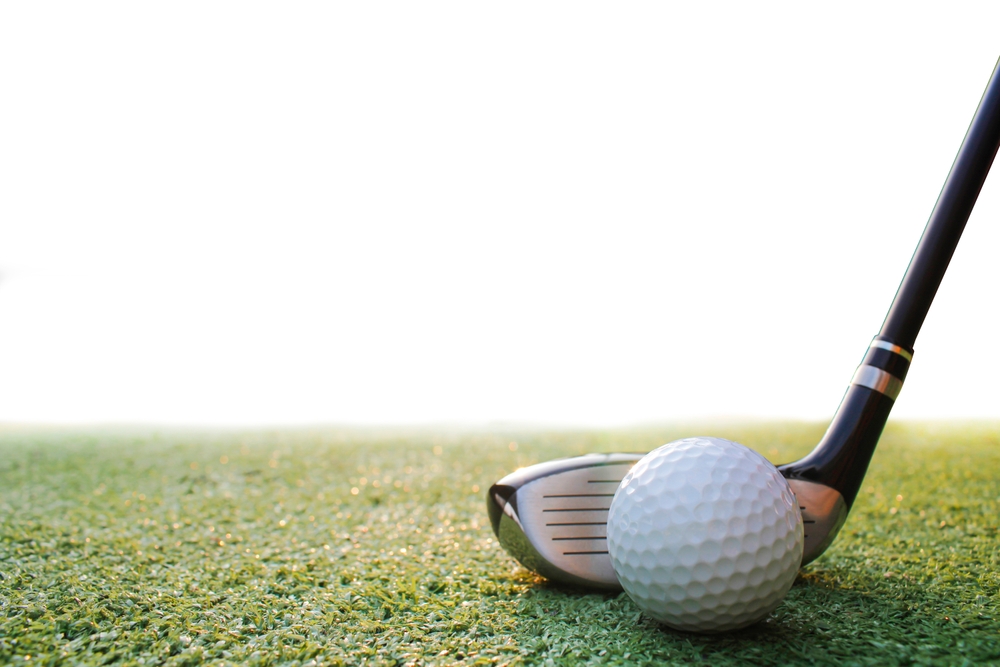
Final Thoughts
Summing up, by now, you must have had a clear idea of the gold club names and how they came into being. There are legends that we associate with golf club names that are almost as fascinating as a well-played round of golf. Our investigation followed the evolution of golf clubs. From the adaptable fairway woods made for longer holes to the accuracy of short irons perfect for approach shots. We looked at the evolution of golf clubs. From the 19th-century mashie niblicks to the contemporary pitching wedge, and how they represent the game’s history and technological progress. This historical tour led to the discovery of phrases like long irons. Moreover, lob wedges, designed to increase playability and make specific strokes easier to hit.
In conclusion, turn an essential club pick into a choice rooted in centuries of athletic tradition.
HIT THAT EAGLE SHOT WITH THE BEST CLUB YOU HAVE GOT!




